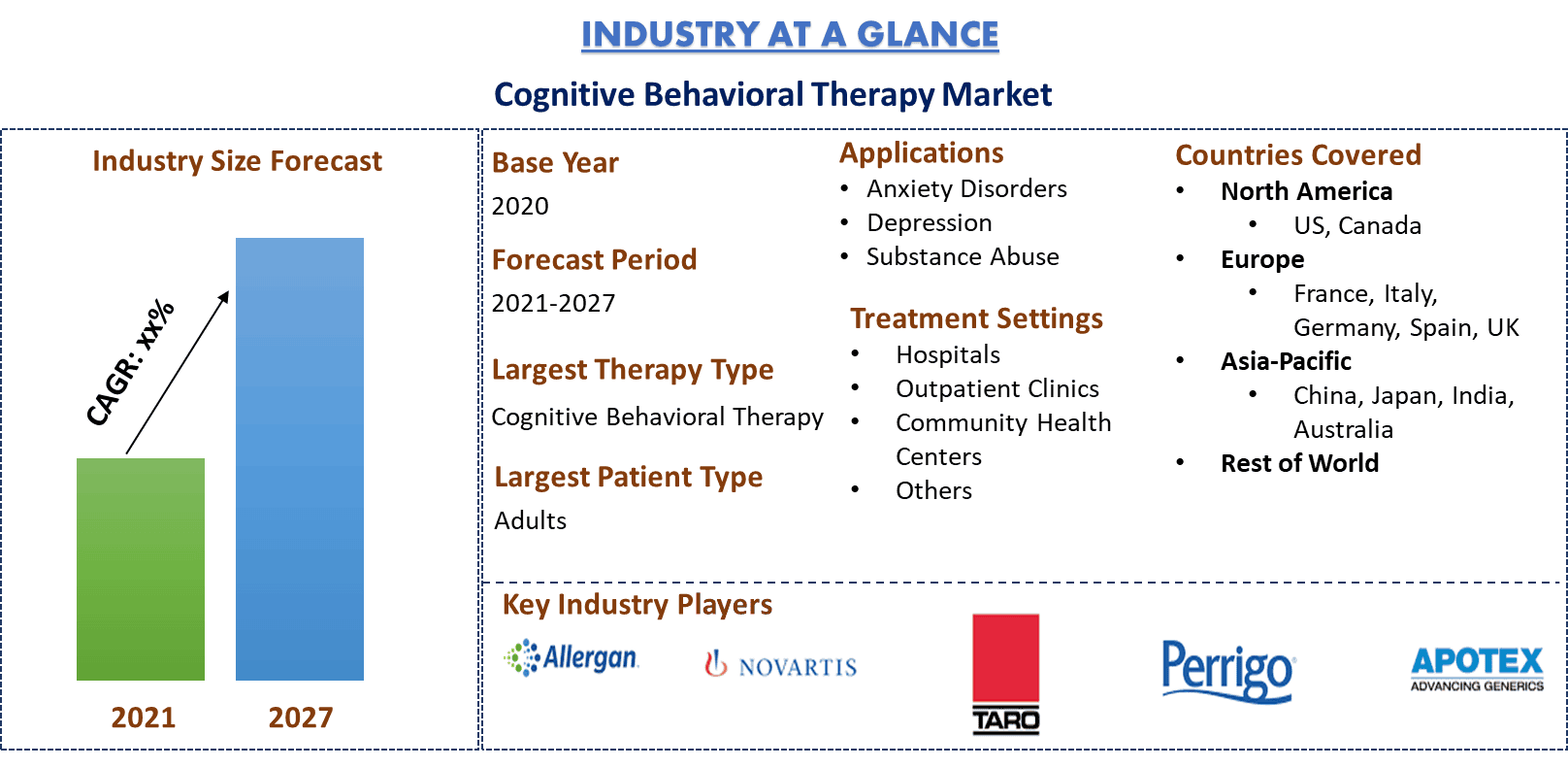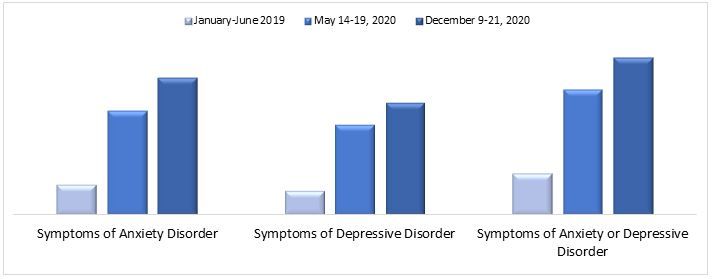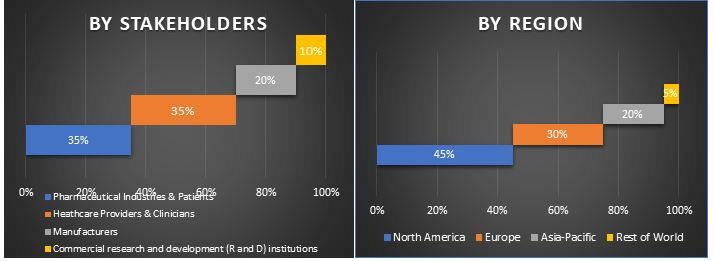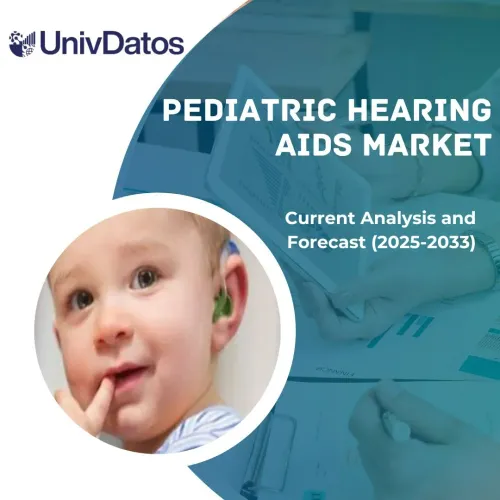- Trang chủ
- Về chúng tôi
- Ngành
- Dịch vụ
- Đọc
- Liên hệ với chúng tôi
Thị trường Liệu pháp Hành vi Nhận thức: Phân tích và Dự báo Hiện tại (2021-2027)
Nhấn mạnh theo Loại (Liệu pháp Hành vi Nhận thức, Liệu pháp Chơi Hành vi Nhận thức, Hệ thống, Giải mẫn cảm, Liệu pháp Ghê tởm, Khác), Ứng dụng (Rối loạn Lo âu, Trầm cảm, Lạm dụng Chất gây nghiện, PTSD (Rối loạn căng thẳng hậu chấn thương), Rối loạn Ăn uống, ADHD (Rối loạn tăng động giảm chú ý), Rối loạn Lưỡng cực, Khác); Loại Bệnh nhân (Trẻ em, Người lớn); Cài đặt Điều trị (Bệnh viện, Phòng khám Ngoại trú, Trung tâm Y tế Cộng đồng, Khác); và Khu vực & Quốc gia.

Thị trường Liệu pháp Hành vi Nhận thức được định giá 23 tỷ USD vào năm 2020 và dự kiến sẽ tăng trưởng với tốc độ CAGR là 5% trong giai đoạn dự báo (2021-2027)Liệu pháp Hành vi Nhận thức (CBT) là một loại liệu pháp tâm lý để điều trị các vấn đề liên quan đến sức khỏe tâm thần khác nhau như rối loạn lo âu, rối loạn khí sắc, rối loạn lạm dụng chất gây nghiện, rối loạn nhân cách và rối loạn giảm chú ý. Các liệu pháp này được thực hiện để thay thế những thói quen xấu bằng những thói quen tốt và giúp người đó quản lý các tình huống khó khăn trong cuộc sống.Theo Cục Điều tra Dân số Hoa Kỳ và Trung tâm Thống kê Y tế Quốc gia, hơn 4/10 người trưởng thành ở Hoa Kỳ đã phát triển các triệu chứng lo âu hoặc trầm cảm vào cuối năm 2020.
Nhu cầu về Liệu pháp Hành vi Nhận thức chủ yếu tăng lên do sự gia tăng của các trường hợp rối loạn ám ảnh cưỡng chế (OCD), các trường hợp trầm cảm ngày càng tăng, Nhận thức về sức khỏe tâm thần và các lựa chọn điều trị hiện có ngày càng tăng, và các hành vi xấu leo thang ở thanh thiếu niên.Theo Hiệp hội Lo âu và Trầm cảm Hoa Kỳ (2020), khoảng 2,3% dân số mắc OCD, tương đương với khoảng 1/100 trẻ em và 1/40 người lớn ở Hoa Kỳ.
Tỷ lệ Người lớn ở Hoa Kỳ có các Triệu chứng Rối loạn Lo âu/Trầm cảm (2021)
Thông tin chi tiết được trình bày trong Báo cáo
“Trong số Loại, phân khúc Liệu pháp Hành vi Nhận thức chiếm phần lớn.”
Dựa trên Loại, thị trường được phân chia thành Liệu pháp Hành vi Nhận thức, Liệu pháp Chơi Hành vi Nhận thức, Hệ thống, Giải mẫn cảm, Liệu pháp Ghê tởm và Khác. Liệu pháp Hành vi Nhận thức chiếm thị phần lớn nhất vào năm 2020 và dự kiến sẽ đăng ký CAGR sinh lợi trong giai đoạn dự báo. Sự gia tăng phổ biến của các rối loạn sức khỏe tâm thần như rối loạn lo âu, trầm cảm, lạm dụng chất gây nghiện, PTSD (rối loạn căng thẳng hậu chấn thương) thúc đẩy sự tăng trưởng của thị trường.Theo Tổ chức Y tế Thế giới (2020), Trầm cảm là nguyên nhân hàng đầu gây tàn tật trên thế giới và hơn 264 triệu người trên toàn thế giới mắc chứng trầm cảm.
“Trong số Ứng dụng, Rối loạn Lạm dụng Chất gây nghiện dự kiến sẽ tăng trưởng với CAGR cao nhất trong giai đoạn phân tích.”
Dựa trên Ứng dụng, thị trường được phân chia thành Rối loạn Lo âu, Trầm cảm, Lạm dụng Chất gây nghiện, PTSD (Rối loạn căng thẳng hậu chấn thương), Rối loạn Ăn uống, ADHD (Rối loạn tăng động giảm chú ý), Rối loạn Lưỡng cực và Khác. Phân khúc rối loạn lo âu đã đăng ký CAGR cao nhất vào năm 2019. Rối loạn Lạm dụng Chất gây nghiện dự kiến sẽ đăng ký CAGR cao nhất trong giai đoạn dự báo, do sự gia tăng của tình trạng lạm dụng chất gây nghiện của những người ở nhà trong thời gian phong tỏa và sự gia tăng của hoạt động kinh doanh bất hợp pháp của các loại thuốc lạm dụng sau khi thất nghiệp.Theo Khảo sát Quốc gia về Sử dụng Thuốc và Sức khỏe (NSDUH), 19,7 triệu người trưởng thành ở Hoa Kỳ (từ 12 tuổi trở lên) đã bị rối loạn sử dụng chất gây nghiện vào năm 2017.
Trong số Loại Bệnh nhân, phân khúc Người lớn chiếm phần lớn”
Dựa trên Loại Bệnh nhân, thị trường được phân chia thành Trẻ em và Người lớn. Phân khúc Người lớn chiếm thị phần lớn nhất vào năm 2020 và dự kiến sẽ đăng ký CAGR sinh lợi trong giai đoạn dự báo do tỷ lệ mắc các rối loạn tâm thần và lối sống xấu cao.Theo Our World in Data, hơn một phần tư (26,3%) người lớn từ 18 đến 25 tuổi mắc bệnh tâm thần vào năm 2018.
Trong số Cài đặt Điều trị, phân khúc Phòng khám Ngoại trú chiếm phần lớn”
Dựa trên Cài đặt Điều trị, thị trường được phân chia thành Bệnh viện, Phòng khám Ngoại trú, Trung tâm Y tế Cộng đồng và Khác. Các Phòng khám Ngoại trú chiếm ưu thế trên thị trường vào năm 2019 và dự kiến sẽ ghi nhận mức tăng trưởng cao nhất trong giai đoạn dự báo. Sự linh hoạt của các phòng khám ngoại trú giúp bệnh nhân đến khám vào ban ngày và ở bên gia đình vào buổi tối. Sự gia tăng của các phòng khám ngoại trú cho các cơ sở sức khỏe tâm thần cũng thúc đẩy sự tăng trưởng của thị trường.Theo Statista, có 5.220 cơ sở sức khỏe tâm thần ngoại trú ở Hoa Kỳ vào năm 2019.
“Bắc Mỹ tượng trưng cho một trong những thị trường lớn nhất và Châu Âu dự kiến sẽ là thị trường tăng trưởng nhanh nhất của thị trường Liệu pháp Hành vi Nhận thức.”
Để hiểu rõ hơn về việc áp dụng thị trường Liệu pháp Hành vi Nhận thức, thị trường được phân tích dựa trên sự hiện diện trên toàn thế giới tại các quốc gia như Bắc Mỹ (Hoa Kỳ, Canada và Phần còn lại của Bắc Mỹ), Châu Âu (Đức, Pháp, Ý, Tây Ban Nha, Vương quốc Anh và Phần còn lại của Châu Âu), Châu Á - Thái Bình Dương (Trung Quốc, Nhật Bản, Ấn Độ, Úc và Phần còn lại của APAC) và Phần còn lại của Thế giới. Bắc Mỹ sẽ thống trị thị trường Liệu pháp Hành vi Nhận thức do các rối loạn sức khỏe tâm thần ngày càng tăng, số lượng phòng khám sức khỏe tâm thần ngày càng tăng và nhận thức cao về sức khỏe tâm thần.Theo Viện Sức khỏe Tâm thần Quốc gia, có khoảng 51,5 triệu người lớn từ 18 tuổi trở lên ở Hoa Kỳ mắc bất kỳ bệnh tâm thần nào (AMI). Con số này đại diện cho 20,6% tổng số người lớn ở Hoa Kỳ.
Lý do để mua báo cáo này:
- Nghiên cứu bao gồm phân tích về quy mô thị trường và dự báo được xác nhận bởi các chuyên gia trong ngành có thẩm quyền
- Báo cáo trình bày một bản xem xét nhanh về hiệu suất tổng thể của ngành trong nháy mắt
- Báo cáo bao gồm phân tích chuyên sâu về các đối tác trong ngành nổi bật với trọng tâm chính là tài chính kinh doanh chính, danh mục sản phẩm, chiến lược mở rộng và sự phát triển gần đây
- Kiểm tra chi tiết các động lực, hạn chế, xu hướng chính và cơ hội hiện có trong ngành
- Nghiên cứu bao gồm toàn diện thị trường trên các phân khúc khác nhau
- Phân tích cấp độ khu vực chuyên sâu của ngành
Tùy chọn Tùy chỉnh:
Thị trường Liệu pháp Hành vi Nhận thức có thể được tùy chỉnh thêm theo yêu cầu hoặc bất kỳ phân khúc thị trường nào khác. Bên cạnh đó, UMI hiểu rằng bạn có thể có nhu cầu kinh doanh riêng, do đó, vui lòng kết nối với chúng tôi để có được một báo cáo hoàn toàn phù hợp với yêu cầu của bạn.
Mục lục
Phân tích thị trường lịch sử, ước tính thị trường hiện tại và dự báo thị trường trong tương lai của thị trường Liệu pháp Hành vi Nhận thức Toàn cầu là ba bước chính được thực hiện để tạo và phân tích việc áp dụng Liệu pháp Hành vi Nhận thức cho các ứng dụng khác nhau trên các Cài đặt Điều trị chính như Bệnh viện, Phòng khám Ngoại trú, Trung tâm Y tế Cộng đồng và Khác. Nghiên cứu thứ cấp mở rộng đã được tiến hành để thu thập các con số thị trường lịch sử và ước tính quy mô thị trường hiện tại. Thứ hai, để xác thực những hiểu biết sâu sắc này, nhiều phát hiện và giả định đã được xem xét. Hơn nữa, các cuộc phỏng vấn chính mở rộng cũng đã được tiến hành, với các chuyên gia trong ngành trên toàn bộ chuỗi giá trị của lĩnh vực Liệu pháp Hành vi Nhận thức. Sau khi giả định và xác thực các con số thị trường thông qua các cuộc phỏng vấn chính, chúng tôi đã sử dụng phương pháp từ trên xuống/từ dưới lên để dự báo quy mô thị trường hoàn chỉnh. Sau đó, các phương pháp phân tích thị trường và tam giác hóa dữ liệu đã được áp dụng để ước tính và phân tích quy mô thị trường của các phân khúc và phân đoạn phụ mà ngành liên quan. Phương pháp chi tiết được giải thích dưới đây:
Phân tích Quy mô Thị trường Lịch sử
Bước 1: Nghiên cứu chuyên sâu về các Nguồn Thứ cấp:
Nghiên cứu thứ cấp chi tiết đã được tiến hành để có được quy mô thị trường lịch sử của Liệu pháp Hành vi Nhận thức thông qua các nguồn nội bộ của công ty nhưbáo cáo thường niên & báo cáo tài chính, bài thuyết trình hiệu suất, thông cáo báo chí, v.v.và các nguồn bên ngoài bao gồmtạp chí, tin tức & bài báo, ấn phẩm của chính phủ, ấn phẩm của đối thủ cạnh tranh, báo cáo ngành, cơ sở dữ liệu của bên thứ ba và các ấn phẩm đáng tin cậy khác.
Bước 2: Phân khúc Thị trường:
Sau khi có được quy mô thị trường lịch sử của thị trường Liệu pháp Hành vi Nhận thức, chúng tôi đã tiến hành phân tích thứ cấp chi tiết để thu thập thông tin chi tiết và chia sẻ thị trường lịch sử cho các phân khúc khác nhau cho các khu vực chính. Các phân khúc chính bao gồm trong báo cáo là Loại, Ứng dụng, Loại Bệnh nhân và Cài đặt Điều trị. Phân tích cấp quốc gia hơn nữa đã được tiến hành để đánh giá việc áp dụng tổng thể Liệu pháp Hành vi Nhận thức ở mọi khu vực.
Bước 3: Phân tích Yếu tố:
Sau khi có được quy mô thị trường lịch sử của các phân khúc và phân đoạn phụ khác nhau, chúng tôi đã tiến hành phân tích yếu tố chi tiết để ước tính quy mô thị trường hiện tại của Liệu pháp Hành vi Nhận thức. Hơn nữa, chúng tôi đã tiến hành phân tích yếu tố bằng cách sử dụng các biến phụ thuộc và độc lập như sự gia tăng của các trường hợp rối loạn ám ảnh cưỡng chế (OCD), các trường hợp trầm cảm ngày càng tăng, Nhận thức về sức khỏe tâm thần ngày càng tăng.
Ước tính & Dự báo Quy mô Thị trường Hiện tại
Đánh giá Quy mô Thị trường Hiện tại:Dựa trên thông tin chi tiết có thể hành động từ 3 bước trên, chúng tôi đã đến với quy mô thị trường hiện tại, các đối tượng chính trên Thị trường Liệu pháp Hành vi Nhận thức và thị phần của các phân khúc. Tất cả các chia sẻ phần trăm bắt buộc, và phân tích thị trường đã được xác định bằng cách sử dụng phương pháp thứ cấp đã đề cập ở trên và đã được xác minh thông qua các cuộc phỏng vấn chính.
Ước tính & Dự báo:Để ước tính và dự báo thị trường, trọng số đã được gán cho các yếu tố khác nhau bao gồm động lực & xu hướng, hạn chế và cơ hội có sẵn cho các bên liên quan. Sau khi phân tích các yếu tố này, các kỹ thuật dự báo có liên quan, tức là phương pháp từ trên xuống/từ dưới lên đã được áp dụng để đưa ra dự báo thị trường vào năm 2027 cho các phân khúc và phân đoạn phụ khác nhau trên các thị trường chính trên toàn cầu. Phương pháp nghiên cứu được áp dụng để ước tính quy mô thị trường bao gồm:
- Quy mô thị trường của ngành, xét về giá trị (USD) và tỷ lệ áp dụng Liệu pháp Hành vi Nhận thức trên các thị trường chính trong nước
- Tất cả các tỷ lệ phần trăm, phân chia và phân tích chi tiết của các phân khúc và phân đoạn thị trường
- Các bên tham gia chính trên thị trường Liệu pháp Hành vi Nhận thức về các dịch vụ được cung cấp. Ngoài ra, các chiến lược tăng trưởng được các bên này áp dụng để cạnh tranh trên thị trường đang phát triển nhanh chóng.
Xác thực Quy mô và Thị phần Thị trường
Nghiên cứu chính:Các cuộc phỏng vấn chuyên sâu đã được thực hiện với các Nhà lãnh đạo Ý kiến Chính (KOL) bao gồm các Giám đốc điều hành cấp cao (CXO / VP, Trưởng phòng Kinh doanh, Trưởng phòng Tiếp thị, Trưởng phòng Vận hành và Trưởng phòng Khu vực, Trưởng phòng Quốc gia, v.v.) trên các khu vực chính. Các phát hiện nghiên cứu chính sau đó đã được tóm tắt và phân tích thống kê đã được thực hiện để chứng minh các giả thuyết đã nêu. Đầu vào từ nghiên cứu chính đã được củng cố với các phát hiện thứ cấp, do đó chuyển đổi thông tin thành những hiểu biết có thể hành động.
Phân chia những người tham gia chính ở các khu vực khác nhau
Kỹ thuật thị trường
Kỹ thuật tam giác dữ liệu đã được sử dụng để hoàn thành ước tính thị trường tổng thể và để đưa ra các số liệu thống kê chính xác của từng phân khúc và phân đoạn phụ của thị trường Liệu pháp Hành vi Nhận thức. Dữ liệu được chia thành một số phân khúc và phân đoạn phụ sau khi nghiên cứu các thông số và xu hướng khác nhau trong các lĩnh vực Loại, Ứng dụng, Loại bệnh nhân và Cài đặt điều trị, và Khu vực của thị trường Liệu pháp Hành vi Nhận thức.
Mục tiêu chính của Nghiên cứu thị trường Liệu pháp Hành vi Nhận thức
Các xu hướng thị trường hiện tại và tương lai của Liệu pháp Hành vi Nhận thức đã được xác định trong nghiên cứu. Các nhà đầu tư có thể thu được những hiểu biết chiến lược để làm cơ sở cho sự quyết định đầu tư của họ từ phân tích định tính và định lượng được thực hiện trong nghiên cứu. Các xu hướng thị trường hiện tại và tương lai đã được xác định sức hấp dẫn tổng thể của thị trường ở cấp độ khu vực, cung cấp một nền tảng cho người tham gia công nghiệp khai thác thị trường chưa được khai thác để hưởng lợi như một lợi thế đi đầu. Các mục tiêu định lượng khác của các nghiên cứu bao gồm:
- Phân tích quy mô thị trường hiện tại và dự báo của Liệu pháp Hành vi Nhận thức về giá trị (USD). Ngoài ra, hãy phân tích quy mô thị trường hiện tại và dự báo của các phân khúc và phân đoạn phụ khác nhau.
- Các phân khúc trong nghiên cứu bao gồm các lĩnh vực Loại, Ứng dụng, Loại bệnh nhân và Cài đặt điều trị và Khu vực
- Xác định và phân tích khuôn khổ pháp lý cho ngành Liệu pháp Hành vi Nhận thức
- Phân tích chuỗi giá trị liên quan đến sự hiện diện của các trung gian khác nhau, cùng với việc phân tích hành vi của khách hàng và đối thủ cạnh tranh trong ngành
- Phân tích quy mô thị trường hiện tại và dự báo của thị trường Liệu pháp Hành vi Nhận thức cho khu vực chính
- Các khu vực chính được nghiên cứu trong báo cáo bao gồm Bắc Mỹ (Hoa Kỳ và Canada), Châu Âu (Đức, Pháp, Ý, Tây Ban Nha và Vương quốc Anh), Châu Á - Thái Bình Dương (Trung Quốc, Nhật Bản, Ấn Độ và Úc) và Phần còn lại của thế giới
- Hồ sơ công ty của thị trường Liệu pháp Hành vi Nhận thức và các chiến lược tăng trưởng do những người chơi trên thị trường áp dụng để duy trì trên thị trường đang phát triển nhanh chóng
- Phân tích cấp độ khu vực chuyên sâu của ngành
Liên quan Báo cáo
Khách hàng đã mua mặt hàng này cũng đã mua












